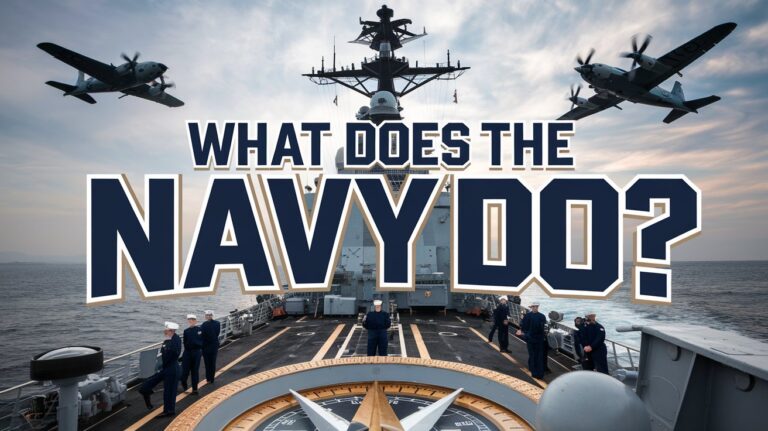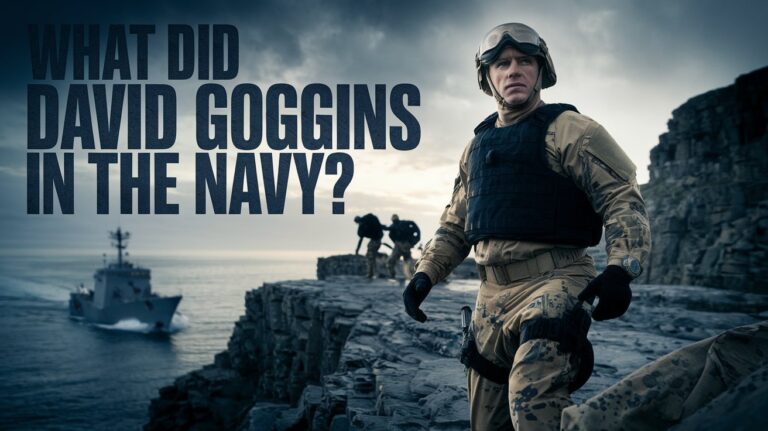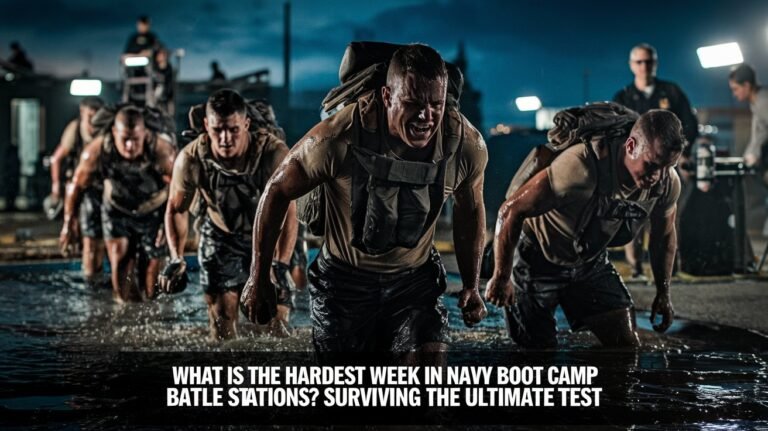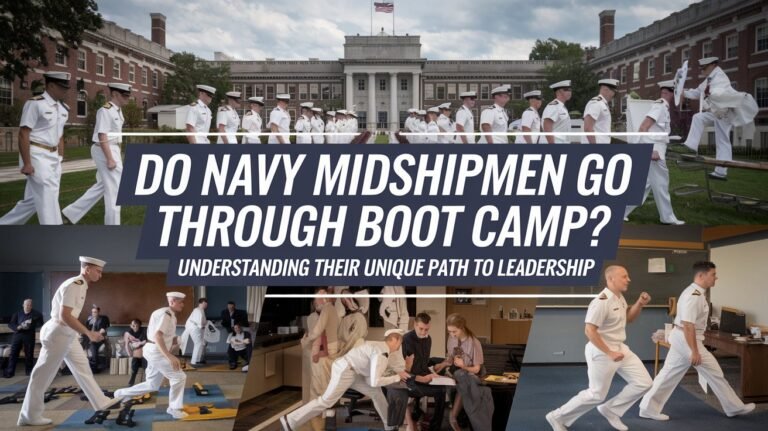Can Navy MPs Arrest Marines? Authority and Jurisdiction
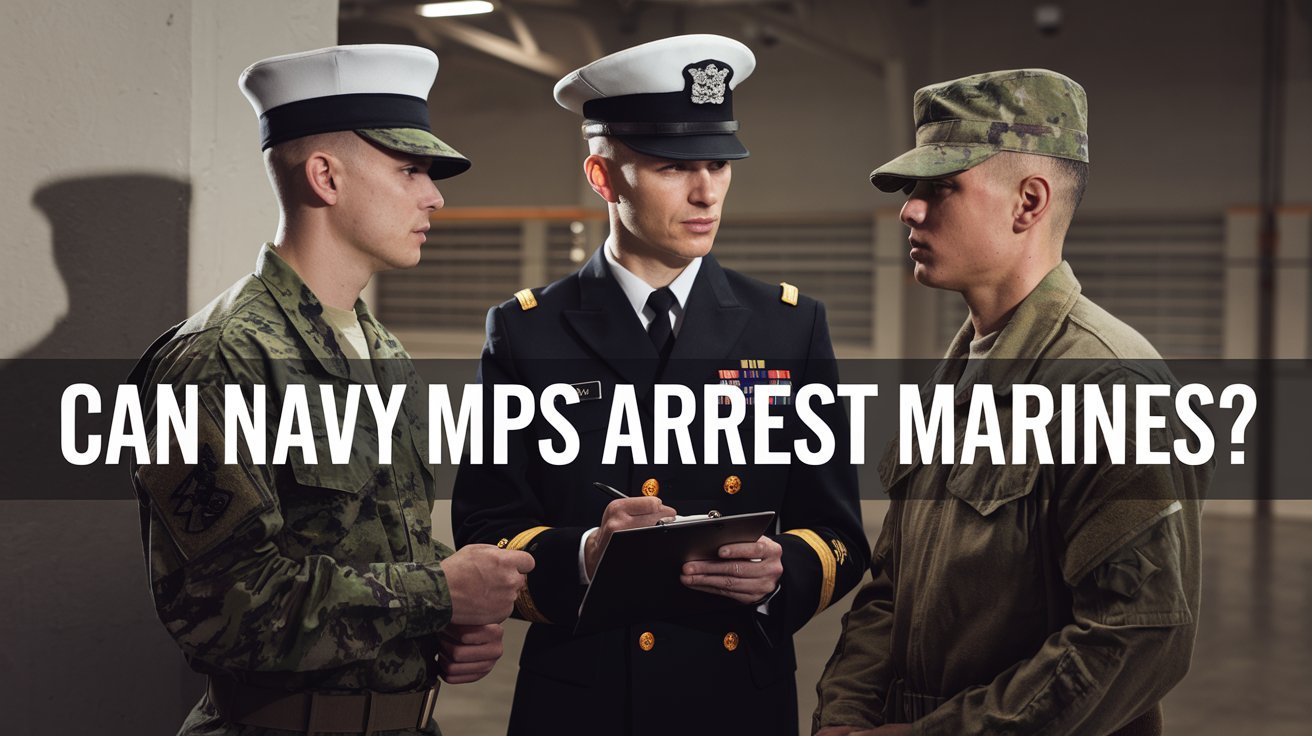
Whether Navy MPs can arrest Marines is a complex issue. It involves understanding military law enforcement. Navy MPs and Marines follow the Uniform Code of Military Justice (UCMJ). This code is key to understanding their legal actions.
The UCMJ is the base of military law. It helps us understand the rules Navy MPs and Marines must follow. They must know the laws that guide their actions and authority.
SECNAVINST 5500.37 guides the use of force and firearms safety. It was set up on 20 May 2019 and updated on 2 Dec 2020. This rule applies to all U.S. Navy and Marine Corps places, showing the importance of legal knowledge.
The legal impact of Navy MPs arresting Marines is big. It’s important to know the laws to protect everyone’s rights. This ensures fairness in military law enforcement.
In the U.S., the Posse Comitatus Act limits military use in domestic law enforcement. It has changed over time, including updates in 2021. Knowing this Act is crucial for understanding Navy MPs and Marines’ legal actions.
As we look into Navy MPs and Marines, we must consider the legal rules they follow. This helps us understand the legal effects of their actions and interactions.
Military Police Jurisdiction Fundamentals
The military police are key in keeping order in the military world. Knowing how they work is important. The Uniform Code of Military Justice (UCMJ) is the main law for military people. Military police follow it on bases.
They can arrest military folks for breaking UCMJ rules. But, civilians on bases can only be arrested for civilian crimes. The Posse Comitatus Act limits federal troops, like military police, from helping with civilian law. Yet, National Guard police can help with law enforcement when they’re on official duty.
Basic Authority Structure
The military police’s power comes from the UCMJ and the Manual for Courts-Martial. They can arrest and hold both military and civilian folks who break the law on bases. They also make sure traffic rules are followed on bases.
Cross-Service Enforcement Powers
Military police from different branches can enforce laws on each other’s bases. For instance, Army police can keep the peace on Air Force bases. This helps keep the military community in order.
Constitutional Framework
The rules for military police follow the UCMJ and the Fifth Amendment. They have to keep the peace while also protecting people’s rights. The UCMJ guides their actions, and the Fifth Amendment ensures people’s rights are respected.
| Branch | Military Police Designation |
|---|---|
| Army | Military Police (MP) |
| Marine Corps | Military Police (MP) |
| Navy | Shore Patrol (SP) |
| Air Force | Security Police |
Historical Background of Military Law Enforcement
The history of military law enforcement in the U.S. starts with the country’s founding. The Declaration of Independence listed complaints about military control without civilian approval. This led to laws and rules about military actions in civilian areas, like the Posse Comitatus Act of 1878.
This law, found in 18 U.S.C. § 1385, stops the military from helping with law enforcement, except in some cases. It shows a long history of keeping military and civilian law enforcement separate. The Constitution lets Congress call the militia for certain tasks, like enforcing laws or fighting invasions, as mentioned in U.S. Const. Art. I, § 8, cl. 16.
Some important moments in military law enforcement history include:
- The Fugitive Slave Act of 1850 allowed slave owners to get help from federal marshals, showing early military involvement.
- The Civil War led to more troops, causing worries about a standing Army being seen as a danger to democracy.
- The Posse Comitatus Act was passed in 1878 and has stayed mostly the same, even with some changes over time.
Understanding the history of military law enforcement helps us see today’s laws and rules about military actions in civilian areas. By looking at how these laws have changed, we can better understand the complex relationship between military and civilian law enforcement in the U.S.
| Year | Event | Description |
|---|---|---|
| 1850 | Fugitive Slave Act | Authorized fugitive slave owners to seek arrest warrants executed by federal marshals. |
| 1878 | Posse Comitatus Act | Prohibited the use of military forces for law enforcement purposes, with certain exceptions. |
| 2005 | Hurricane Katrina | President George W. Bush wanted to change the Posse Comitatus Act to let military help during natural disasters. |
Can Navy MPs Arrest Marines: Legal Framework
The rules for Navy MPs and Marines are detailed and complex. They are based on the powers given to Navy MPs. This comes from the Uniform Code of Military Justice (UCMJ), a federal law that combines military rules.
UCMJ covers all active duty members, anytime and anywhere. It also includes reservists on duty and military retirees. It has 146 articles, divided into two parts: procedural and punitive. Knowing this is key to understanding when Navy MPs can arrest Marines.
Statutory Authority
Navy MPs can arrest Marines in some cases. This includes on Navy property or during joint operations. The UCMJ gives them this power, but with limits. For example, the UCMJ’s reach can change based on the situation.
Command Structure Impact
The military’s command structure affects Navy MPs and Marines. The chain of command can influence their actions. Sometimes, Navy MPs must work with Marine commanders before making an arrest.
Jurisdictional Limitations
There are limits to where Navy MPs can act. These depend on the case’s location and the offense. For instance, Navy MPs can arrest Marines on Navy property but not always elsewhere.
| Authority | Jurisdiction | Circumstances |
|---|---|---|
| Statutory Authority | UCMJ | Active duty, reservists, retirees |
| Command Structure | Chain of Command | Coordination with Marine commanders |
| Jurisdictional Limitations | Navy Property | Location, nature of offense |
Rules for Navy MPs and Marines are complex. It’s important to understand their powers, the command structure, and where they can act. This helps figure out when Navy MPs can arrest Marines.
Base Jurisdiction Protocols
Comprehending base jurisdiction protocols is fundamental to effective military law enforcement. It outlines how to handle incidents across different branches. These protocols make sure everyone follows the law and respects each other’s areas.
In the United States, these rules help the Navy and Marine Corps work together. They make sure everyone knows their role and the laws they must follow.
The Marine Corps has its Military Police for keeping order on its bases. The Navy has the Naval Criminal Investigative Service (NCIS) for serious crimes. This shows how each branch has its own way of enforcing the law.
When a crime happens on a base, these protocols kick in. They decide who gets to handle the case. The aim is to solve problems fairly and keep the law in mind.
Some important parts of these protocols are:
- Clear lines of authority and communication between different branches
- Established procedures for handling incidents that may involve multiple branches
- Respect for jurisdictional boundaries and the laws and regulations that govern each branch
Sticking to these rules, the military can solve problems efficiently. These protocols are vital for keeping order and discipline in the ranks.
Cross-Service Authority Scenarios
Understanding cross-service authority is key in dealing with law enforcement between military services. The U.S. military has many branches, each with its own rules. Situations involving different services need careful thought about on-base incidents, off-base jurisdiction, and joint operations.
On-base incidents happen within military bases. They might involve members from different services. It’s important to know how to handle these situations. For example, if a Navy MP and a Marine get into an issue on a joint base, figuring out who has authority is crucial.
On-Base Incidents
Dealing with incidents on bases can be tricky. The base commander usually has the final say. But, when different services are involved, they must work together. The aim is to solve the problem fairly and follow the law.
Off-Base Jurisdiction
Off-base incidents happen outside bases. In these cases, the rules of the area where the incident took place matter. For instance, if a Navy MP and a Marine have a problem off-base, they must follow local laws and the rules for working together between services.
Joint Base Operations
Joint bases are where different services work together. Handling incidents here requires careful planning. The goal is to solve problems fairly and follow the law, while keeping the joint base running smoothly.
Military Police Chain of Command
The military police chain of command is key in military law enforcement. It shows who is in charge and who is responsible. This chain is vital for making quick and effective decisions.
The chain starts with the highest officer and goes down to the lowest rank. It makes sure everyone knows their job and is accountable. It also helps in fast communication and response to emergencies.
Some important parts of the military police chain of command are:
- Clear lines of authority and responsibility
- Established protocols for communication and decision-making
- Defined roles and responsibilities for all personnel
- Accountability for all actions and decisions
In military police work, the chain of command is crucial. It helps everyone work together to keep order, support other units, and protect people and property. Knowing the chain of command helps us see its importance in military law enforcement.
Rights of Service Members During Arrests
Service members have special rights when they are arrested. These rights are protected by the Uniform Code of Military Justice (UCMJ). They include the right to stay silent and the right to an attorney. It’s important for them to know these rights and how they are protected in the military justice system.
During an arrest, service members must know their Article 31 rights. These rights include the right to remain silent, to have an attorney, and to stop answering questions at any time. Without knowing these rights, any statements made can’t be used in court. The unique pressures of military life make these rights different from civilian rights.
Legal Protections
Service members have the same rights as other defendants in federal court. They can hire a criminal defense lawyer. It’s wise for them to choose lawyers with military experience for better court-martial representation. Knowing what documents to report is also key, as they must report any criminal convictions to their branches.
Documentation Requirements
The rules for reporting vary by branch. For example, in the Army, only convictions need to be reported. But in the Navy and Marine Corps, all arrests and charges must be reported. Service members also need to understand the differences between state and federal laws. Some actions, like adultery, are illegal in the military but might be legal elsewhere.
Appeal Processes
Service members accused of a crime have the right to appeal. They can file a petition with the right court and may have a lawyer. Knowing about appeal processes and rights during arrests is key to fair treatment under the law.
Interservice Cooperation Protocols
Effective military operations, like law enforcement, need teamwork between services. This teamwork is key to reaching goals while keeping each service’s role clear. The Department of Defense (DoD) has set up rules to help services work together smoothly.
These rules are found in various instructions and directives, like the DoD Instruction 1325.07. This instruction guides how to run military correctional facilities. It sets out goals, responsibilities, and what facilities need in terms of security.
Teamwork is crucial for good law enforcement, and the DoD has taken steps to boost it. For example, the Army, Navy, Air Force, and Coast Guard each have their own legal teams. These teams share knowledge and work together to meet shared objectives.
The following table highlights the number of judge advocates in each branch:
| Branch | Active Duty Judge Advocates | Reserve Judge Advocates |
|---|---|---|
| Army | 1,910 | 1,800 |
| Navy | 843 | 415 |
| Air Force | 1,154 | 896 |
| Coast Guard | 194 | 90 |
These numbers show the big investment in legal support for each branch. This teamwork helps services reach their goals and keeps the military justice system strong.
Modern Military Police Operations
Modern military police operations have seen big changes. These changes come from new technology and better training. For example, digital forensics and surveillance systems help solve crimes better.
Training standards have also improved a lot. Military police now get tough training. This training prepares them for complex tasks like handling detainees and controlling crowds. The Department of Defense and Army Regulation 190-8 guide this training. They focus on treating detainees humanely and following international laws.
Key Developments in Modern Military Police Operations
- Integration of technology, such as digital forensics and surveillance systems
- Emphasis on updated training standards for military personnel
- Adherence to international laws, including the Geneva Conventions
- Classification of detainees, including Enemy Prisoners of War (EPWs), Civilian Internees (CIs), and Retained Persons (RPs)
Modern military police face a complex world. Warfare has changed, and so has the role of military police. They must deal with new battlefields and unclear detainee classifications. The United States Army Military Police Corps, started in 1941, has always adapted. Its ongoing evolution is key to keeping military police effective.
| Year | Event | Impact on Military Police Operations |
|---|---|---|
| 1941 | Establishment of the United States Army Military Police Corps | Marked the beginning of a formalized military police force |
| 2001 | September 11 attacks | Changed the nature of warfare, requiring military police to adapt to noncontiguous battlefields |
| 2014 | Deactivation of the 793rd Military Police Battalion | Reflected the evolving needs of military police operations |
Legal Precedents and Case Studies
Legal precedents and case studies offer insights into the military justice system. They show how it deals with law enforcement incidents between services. Military law allows for warrantless arrests of civilians in some cases. For instance, the Posse Comitatus Act limits military help for civil law enforcement, but there are exceptions.
Looking at case studies, we see the importance of military law enforcement’s power to arrest civilians without a warrant. The Military Purpose Doctrine lets military actions help civil authorities, even if it’s not the main goal. Here are some key points:
- Military law enforcement gets its power from the installation commander, a key part of military law.
- The main job of military authority is to keep law and order on federal installations.
- The power of military law enforcement changes based on the details of the incident and the legal area involved.
Studying legal precedents and case studies, we understand military law better. We see how military law enforcement keeps order and peace.
| Category | Description |
|---|---|
| Military Law Enforcement Authority | Derived from the installation commander |
| Primary Focus | Maintenance of law and order on federal installations |
| Off-Post Incidents | Authority varies according to legal jurisdiction |
Bottom Line
The legal issues around Navy military police (MPs) arresting Marines are complex. They need a deep understanding of the laws that apply. Navy MPs can arrest Marines on Navy bases or ships for breaking Navy rules or the Uniform Code of Military Justice (UCMJ).
But, their power to arrest is limited when Marines are off Navy property. In these cases, Marine Corps MPs have the main authority.
The details of how different military groups work together are key. This includes the Posse Comitatus Act, agreements between the Department of Justice and the Department of Defense, and the UCMJ’s time limits. These all affect how military police operate legally.
Military must keep up with new threats and technology. It’s vital to understand the legal sides of arrests and protect the rights of service members. By knowing the latest in military law, Navy MPs and Marine Corps can do their jobs well and safely. This helps the military stay ready and strong.
Key Questions
What is the basic authority structure for military police jurisdiction?
Military police follow a strict hierarchy. Each branch has its own law enforcement. They work under their own command.
What are the cross-service enforcement powers for military police?
Military police from different branches can enforce laws in some cases. This is based on laws and the Constitution.
What is the historical background of military law enforcement?
Military law enforcement has grown over time. Important events and policy changes have shaped it today.
What is the legal framework that governs whether Navy MPs can arrest Marines?
Laws give Navy MPs the power to arrest Marines. The command structure and jurisdiction also play a role.
What are the base jurisdiction protocols for handling incidents involving multiple military branches?
Protocols exist to handle incidents on bases. They ensure the law is followed and respect is given to all branches.
What are the different scenarios where cross-service authority comes into play?
Cross-service authority is used in many situations. This includes incidents on bases, off-base, and in joint operations.
How does the military police chain of command work?
The chain of command is clear for military police. It shows who is in charge in inter-service law enforcement.
What are the rights of service members during arrests?
Service members have rights during arrests. These include legal protections, documentation needs, and appeal options.
What are the protocols for interservice cooperation in military law enforcement?
Protocols guide how branches work together. They ensure cooperation while respecting each branch’s area of authority.
How have modern developments impacted military police operations?
New technology and training changes have affected military police. These advancements have shaped their work today.
What legal precedents and case studies are relevant to the topic of Navy MPs arresting Marines?
Looking at legal cases and precedents helps understand military justice. It shows how incidents between branches are handled.


